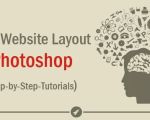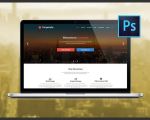- Why a Website Design Checklist is Important for Beginners
- Understanding the Key Elements of Website Design
- Steps to Follow in Your Website Design Process
- Tools and Resources for Beginners to Design Websites
- Common Mistakes to Avoid When Designing Your Website
- Tips for Creating an Effective and User-Friendly Website
Why a Website Design Checklist is Important for Beginners
Designing a website can be a daunting task, especially if you're just starting out. There are many factors to consider—everything from the layout and design to the user experience and functionality. A well-structured website design checklist is a crucial tool that helps beginners navigate through these complexities and ensure they don't overlook any important elements.
A website design checklist allows you to break down the process into manageable steps, ensuring that each element of your site is considered and completed before launch. From choosing the right colors and fonts to optimizing images and ensuring mobile responsiveness, a checklist ensures that you stay organized and focused throughout the entire design process.
Additionally, a checklist helps you prioritize tasks and focus on what's truly important, rather than getting bogged down by minor details. By following a checklist, you can create a more efficient workflow, ensuring a successful website design that meets both your goals and the needs of your users.
Understanding the Key Elements of Website Design
Before diving into the design process, it's essential to understand the key elements that make up a successful website. These elements not only contribute to the visual appeal of your site but also impact the user experience, functionality, and overall effectiveness. Below are some of the most important elements to consider:
1. Layout: The layout determines how your website's content is structured and presented. A clear and well-organized layout makes it easy for visitors to navigate your site and find the information they need. Keep the design simple and intuitive, with well-defined sections and clear calls to action.
2. Color Scheme: Colors play a crucial role in creating the right mood and atmosphere for your website. Choose a color palette that aligns with your brand identity and appeals to your target audience. Be sure to use contrasting colors to highlight important elements, like buttons and links.
3. Typography: The fonts you use should be easy to read and complement the overall design. Avoid using too many different fonts and stick to a maximum of two or three styles. Ensure that the text size and spacing are legible on all devices.
4. Images and Graphics: High-quality images and graphics are essential for enhancing the visual appeal of your website. Use images that are relevant to your content and support your message. Be mindful of file sizes to avoid slowing down your site’s loading time.
5. Navigation: A well-structured navigation system is essential for helping users easily find what they’re looking for. Keep the navigation bar simple, with clear labels and links to important sections of your website.
Steps to Follow in Your Website Design Process
Designing a website is a step-by-step process. Each stage plays a vital role in creating a functional and visually appealing site. Here's a simple step-by-step guide for beginners to follow:
1. Define Your Website’s Purpose and Goals: Before you start designing, it’s crucial to define the primary goal of your website. Are you building a portfolio, an e-commerce site, or a blog? Understanding the purpose of your site will guide the design choices you make.
2. Plan Your Content: Organize the content that will appear on your website. This includes text, images, videos, and other media. Make sure the content aligns with your website’s goals and is structured in a way that’s easy for users to consume.
3. Create a Wireframe: A wireframe is a blueprint of your website’s layout. It allows you to plan where content, images, and navigation will be placed on each page. Wireframing tools like Figma or Sketch can help you visualize your design before you start building.
4. Design and Develop: Once you have a wireframe, you can begin designing and developing your website. Use tools like Adobe XD or Webflow to create the visual design and functionality. At this stage, you’ll implement your color scheme, typography, and layout.
5. Test and Optimize: After your website is built, it’s important to test it on different devices and browsers to ensure it’s responsive and user-friendly. Optimize the site’s performance by reducing load times and improving SEO.
Common Mistakes to Avoid When Designing Your Website
Even the most seasoned designers can make mistakes during the website design process. As a beginner, it’s essential to be aware of the most common pitfalls and avoid them to ensure your website is functional and successful. Here are a few mistakes to watch out for:
1. Overcomplicating the Design: Simplicity is key when designing a website. Avoid cluttering your site with too many design elements, fonts, and colors. Stick to a clean, minimal design that enhances the user experience rather than distracting from it.
2. Ignoring Mobile Responsiveness: With more people browsing the internet on mobile devices, it’s crucial to ensure that your website is fully responsive. Make sure your design looks great and functions well on smartphones and tablets.
3. Neglecting SEO: SEO (Search Engine Optimization) is an essential part of web design. Without proper SEO, your website may not rank well on search engines. Make sure to optimize your content, meta tags, and images for better visibility.
Tools and Resources for Beginners to Design Websites
There are several tools available that can help beginners design a website, even without prior experience in coding or web development. Here are some tools and resources that can help:
1. Website Builders: Platforms like Wix, Squarespace, and WordPress offer drag-and-drop functionality, making it easy to design a website without any coding knowledge.
2. Design Tools: Tools like Figma, Adobe XD, and Canva can help you design your website’s layout and graphics with ease.
3. Online Courses and Tutorials: If you want to dive deeper into web design, there are countless online tutorials and courses available. Websites like Udemy, Coursera, and YouTube provide step-by-step guides to help you learn web design from scratch.
4. Hosting and Domain Services: Platforms like Bluehost, SiteGround, and Namecheap offer affordable hosting and domain registration services for your website.








